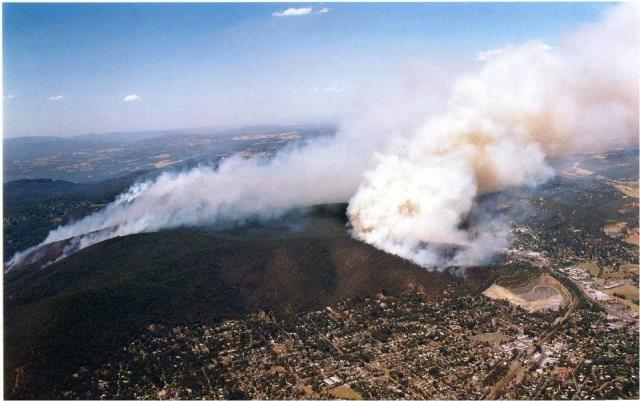By Neve Brissenden, AAP
Suburban areas of several Australian capital cities are at an increased risk this fire season, new research has revealed.
Suburban Canberra will be at high risk through the upcoming fire season, 20 years after devastating summer bushfires ripped through the region in 2003.
Brisbane, Sydney and Melbourne are also facing an increased fire threat over December and January, as researchers warn unburnt areas could be next in line.
Researcher Ken Kato from disaster forecasting service Early Warning Network said vegetation growth in some suburban areas could mean a particularly tough season ahead.
“There are all sorts of different factors but generally speaking if an area hasn’t had a big bushfire for quite a while, the risk is higher,” he said.
The new research revealed several areas across the country are at a higher risk.
In Melbourne, areas of the Dandenong Ranges have not been burnt since 1997, meaning bushland and outer suburbs of the Dandenong area could be at risk.
Sydney’s north and northwest have also not experienced widespread fires in more than 30 years and a greater risk is posed to northern suburbs and the Ku-ring-gai Chase National Park.
Risk is also forecast for northwest, southwest and island areas of Brisbane despite some significant fires on Moreton and Stradbroke islands in recent years.
“If an area hasn’t had a big bushfire for quite a while, the risk is higher,” Ken Kato says.
Two years of La Nina weather events have led to significant vegetation growth and Mr Kato said no one was immune to the upcoming fire threat.
“A lot of the 2003 Canberra fires went into suburban areas and that’s always a risk in Canberra,” he said.
“In Brisbane and Sydney suburbs there’s patches of suburban bushland and green corridors, so just because somebody happens to be technically part of the metro area of a capital city doesn’t mean they’re immune from fire.”
More than 70 per cent of the ACT’s pastures, pine plantations and nature parks were severely damaged in the 2003 bushfires.
Four people died, hundreds were injured and 510 properties were destroyed in the blazes that penetrated the suburbs.
The high-risk fire hotspot warnings come weeks after the Bureau of Meteorology formally declared an El Nino event in the Pacific Ocean, to Australia’s east, and a positive Indian Ocean Dipole (IOD), to the west.
El Nino typically delivers above-average heat and drier conditions, particularly in eastern Australia, and a positive IOD tends to drive lower-than-average rainfall for swathes of the country.
The bureau warned hot, dry conditions were expected to persist until the end of summer, though conditions were not quite as bad as those leading up to Black Summer.
Mr Kato said although the upcoming fire season was set to be the worst since 2019-20, emergency services and the general public have learnt from the devastating blazes.
“Firefighting resources are a lot better – even compared to decades ago,” he said.
“But once a fire gets big enough, there’s only so much you can do.”







